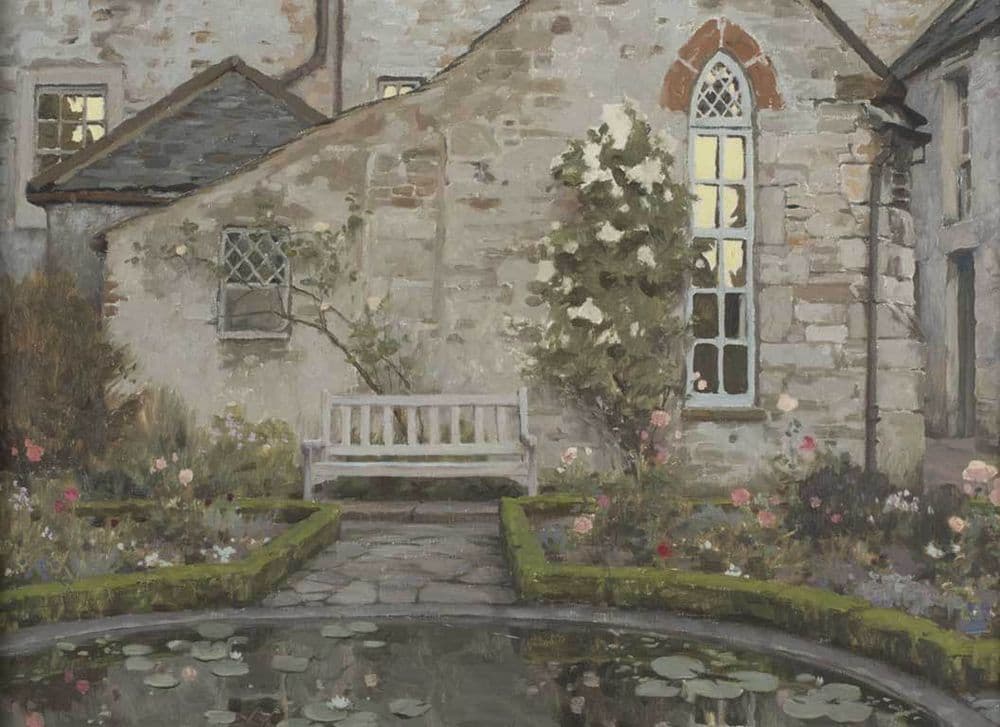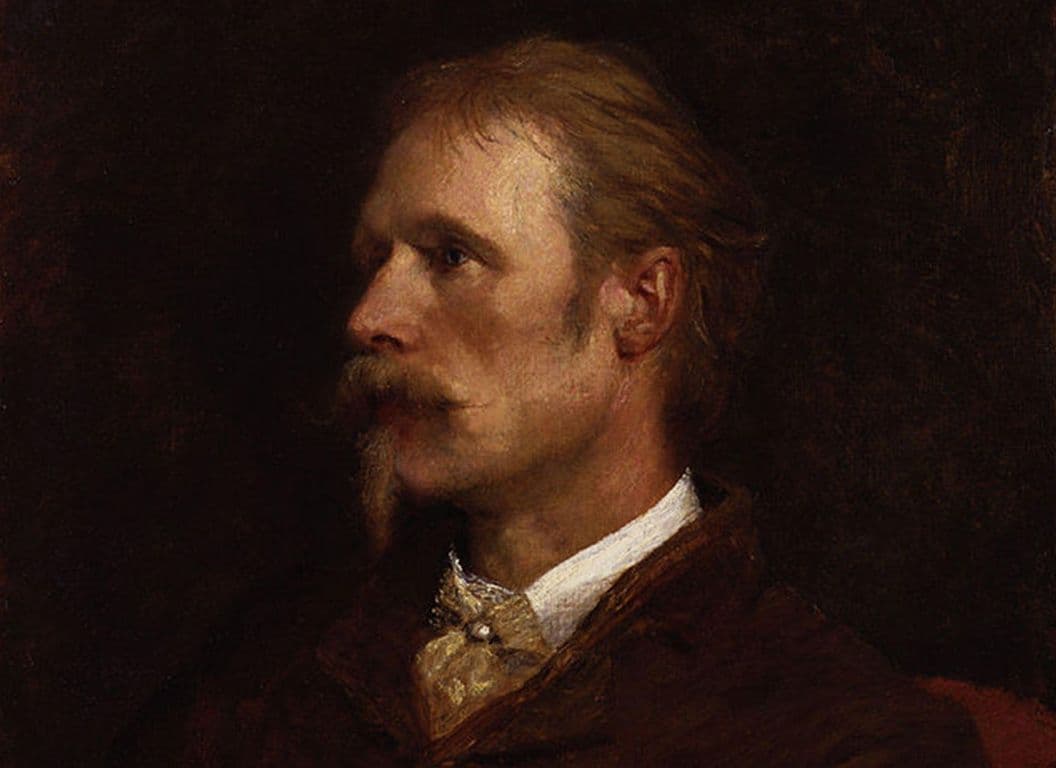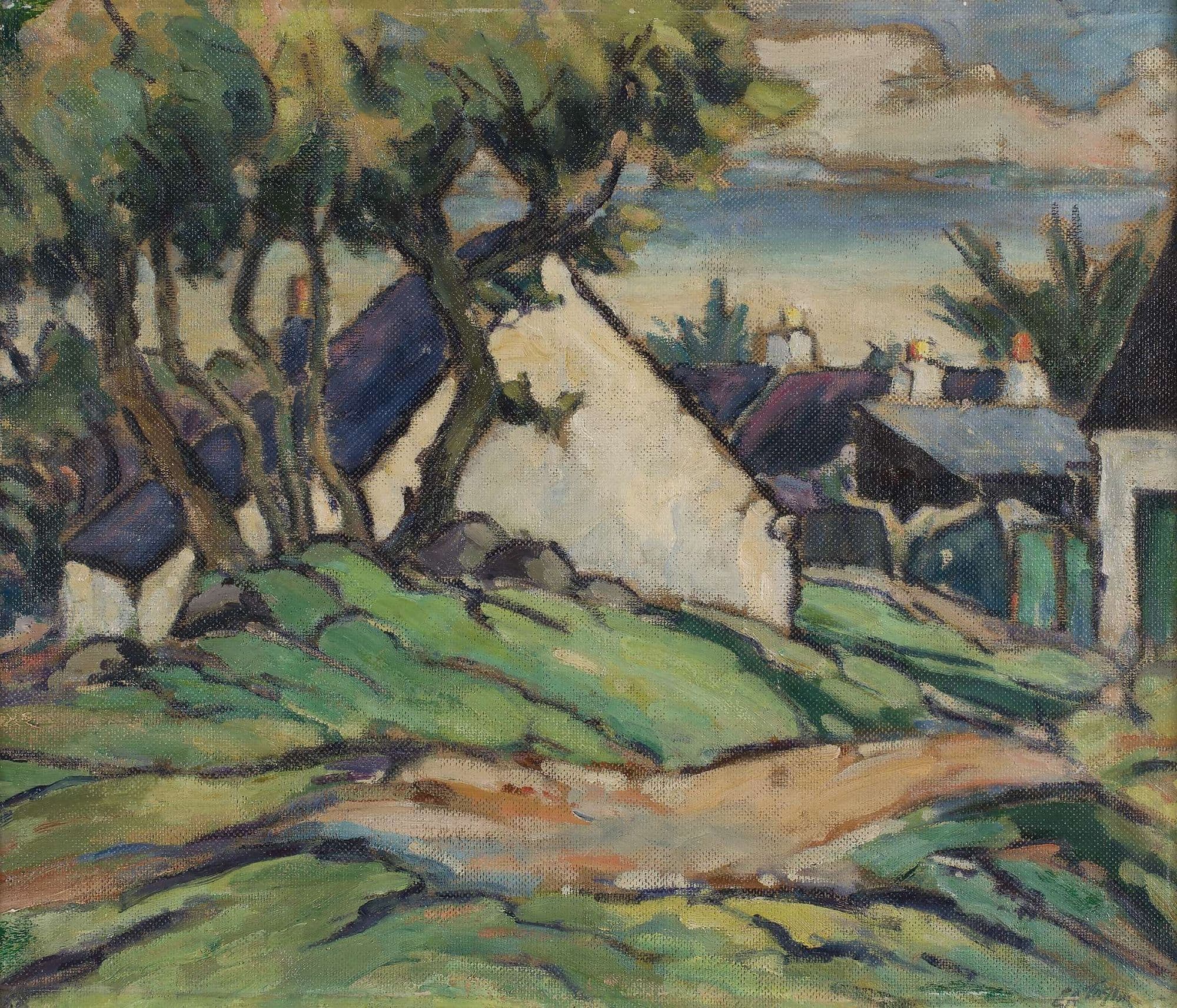Though his name is inextricably linked with the Kirkcudbright School of artists, the half-German, Manchester-born-and-raised artist Charles Oppenheimer did not in fact settle in this region until the end of World War One.
In his youth Oppenheimer had trained under Walter Crane at Manchester School of Art, as well as in Italy. He found himself instinctively drawn to Scotland, although more to the lowlands and the pastoral landscapes of Kirkcudbrightshire than to the rugged Highlands.
Kirkcudbright had long been a centre of artistic activity by the time Oppenheimer settled there. Artists had been drawn there since the 1880s, and by 1900 the little town was attracting painters from Glasgow and Edinburgh including E.A. Walton, A.S. Hartrick, James Lawton Wingate, David Gauld and D.Y. Cameron.
Oppenheimer arrived in 1908, and, having served with the Royal Artillery during the Great War, returned to Kirkcudbright at its close, finding many new friends. Among them were the book illustrator Jessie M. King and her husband, E.A. Taylor who, having lived in Kirkcudbright before the war, had returned there in 1915. From 1929 the crime writer Dorothy L. Sayers and her husband also rented a studio on The High Street next door to Oppenheimer, with whom he became good friends.
Oppenheimer’s paintings famously often depict the same view at different times of year. He was a keen fisherman and had a talent for capturing the play of light on water. He painted landscapes and townscapes and also designed a number of iconic posters for British Rail.
Over time Oppenheimer became a respected stalwart of the Scottish art world and a Royal Scottish Academician, with an oeuvre firmly and famously associated with the depiction of Galloway. Less well known perhaps is the fact that, as his biographer Euan Robson puts it, ‘Italy was as much his muse as Galloway’. From his very first visit in 1896, funded by an artistic cash prize, he was captivated by this beautiful country – the heat, light, warmth, friendship and culture he found there. It was the start of a long-standing love affair which generated decades worth of inspiration and subject matter. Possibly his most artistically significant visit was the 1912 tour of Venice and Verona he undertook with William Stewart MacGeorge, an important friend and advisor to Oppenheimer, who also called Galloway home.
The works produced during this visit formed the basis of a pivotal exhibition for Oppenheimer placing him as a significant player in the Scottish art scene. He exhibited fifty-two of his works in Glasgow, and received a rave review in the Glasgow Herald, celebrating his ‘dignified draughtsmanship and refined sense of colour’ as well as his ‘exhilarating sparkle.’
Charles Oppenheimer died in Kirkcudbright in 1961. His work remains highly sought after at auction to this day.





